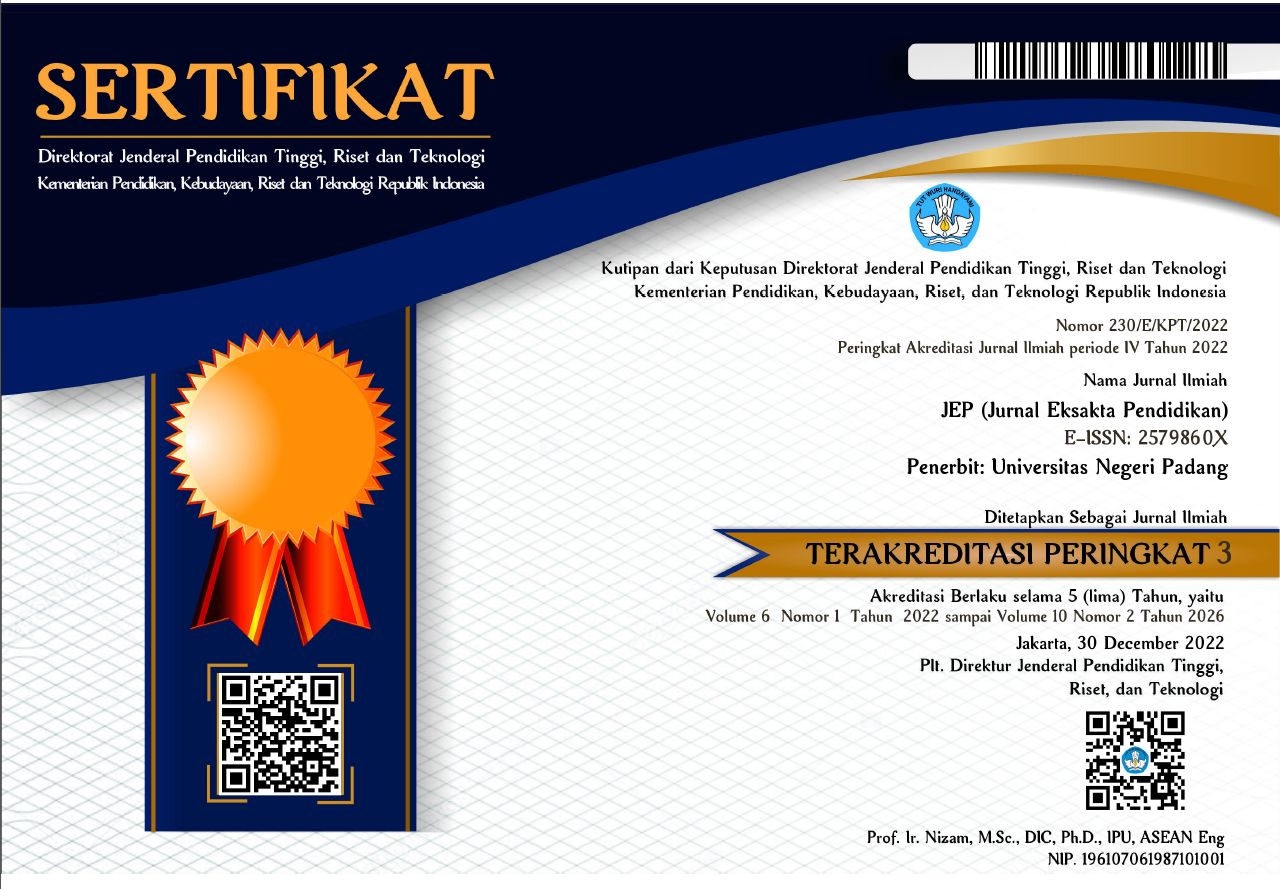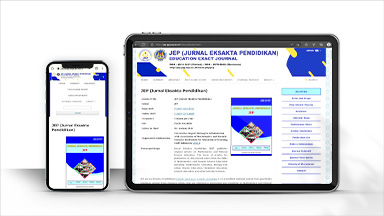Pengembangan Instrumen Tes Berbasis Higher Order Thinking Skill Pada Materi Hidrolisis Garam Untuk Siswa SMA/MA
Abstract
The purpose of this study was to develop a higher order thinking skill (HOTS) based test instrument on salt hydrolysis for senior high school students. The type of research used is Research and Development (R&D) using the Plomp model which consists of three stages, namely Preliminary Research, Prototyping Stage and Assessment Phase. The test instrument was validated by 7 experts, namely 4 chemistry lecturers of FMIPA UNP, and 3 chemistry teachers using a validation questionnaire. The small group trial was carried out by 6 students and the field test was carried out by 26 students of Senior High School number 1 in Padang. The data analysis technique for content validity uses Lawshe's CVR and the construct validity uses the aiken’s formula. The results showed that the instrument developed had good characteristics in terms of logical validity with a content validity index (CVI) of 0.841 and a construct validity of 0.82. The reliability coefficient of 0.89 is very high. The analysis of discriminating power showed 16 items had very good distinguishing quality, 4 items had good distinguishing quality, 4 items had moderate distinguishing quality. The difficulty index for 88% of the questions is categorized as medium. The correlation of the item score with a significant total score was 21 items. The dictator function on all items is effective. The data obtained shows that the test instrument based on higher order thinking skills (HOTS) on salt hydrolysis material for senior high school students is valid and has good item quality.
Downloads
References
Arikunto, Suharsimi. 2015. Dasar-dasar Evaluasi Pendidikan. Jakarta: Bumi Aksara.
Hanifah, Nurdinah. 2019. Pengembangan Intrumen Penilaian Higher Order Thinking Skill (HOTS) disekolah dasar. Current Research in Education: Conference Series Journal.Vol. 1. No. 1.
Husnawati, A. 2019. Pengembangan Soal Higher Order Thinking Skill (HOTS) Fisika Kelas VIII SMP Materi Gerak Pada Benda. UPEJ Unnes Phys Educ J. Vol. 8. No. 2.
Kemendikbud. 2019. Modul Penyusunan Soal Keterampilan Berpikir Tingkat Tinggi (Higher Order Thinking Skill). Jakarta: Direktorat pembinaan SMA Direktorat Jendral Pendidikan Dasar dan Menengah Departemen Pendidikan dan Kebudayaan.
Kemendikbud. 2019. Panduan Penulisan Soal HOTS (Higher Order Thinking Skill). Jakarta: Pusat Penilaian Pendidikan Badan Penelitian dan Pengembangan Kementrian Pendidikan dan Kebudayaan.
Latisma. 2011. Evaluasi Pendidikan. Padang: UNP Press.
Lawshe, C. H. 1985. A Quantitative Approach to Content Validity. Personel Psyclogy.
Lynn, M. 1986. Determination and Quantification of Content Validity. Nursing Research, 35, 382-386
OECD. 2019. PISA 2018: Assesment and Analytical Frame Work: Science, Reading, Mathematic and Financial
Literacy. Paris: OECD Publishing.
Plomp, T. dan N. N. 2013. Education Design Research. Enschede, Netherland: National Institute for Curriculum Development (SLO).
Purwanto, N. 2012. Prinsip-prinsip Teknik Evaluasi Pengajaran. Bandung: Remaja Rosdakarya.
Puspendik. 2011. Instrumen Penilaian Hasil Belajar Matematika SMP: Belajar dari PISA dan TIMMS. Jakarta: Balitbang Depdiknas.
Retnawati, H. (2016). Analisis Kuantitatif Instrumen Penelitian. Yogyakarta: Parama Publishing.
Sudjiono, A. 2009. Pengantar Evaluasi Pendidikan. Jakarta: Rajawali Press.
Sudjiono, A. 2011. Pengantar Evaluasi Pendidikan. Jakarta: Raja Grafindo Persada.
Sugiyono. 2012. Metode Penelitian Pendidikan. Bandung: Alfabeta.
Wilson, F. R, et al. 2012. “Recalculationof the Critical Values For Lawshe’s Content Validity Ratioâ€. Measurement and Evaluation In Counseling and Development. 45(3): 197-210.
Copyright (c) 2020 Intan Permata Muchlis, Andromeda Andromeda

This work is licensed under a Creative Commons Attribution 4.0 International License.

This work is licensed under a Creative Commons Attribution 4.0 International License.




_(2579-860X).png)
_(2614-1221)1.png)




